Van Wagenen House
Introduction
Text-to-speech Audio
Images
Main (S) facade of Van Wagenen House in 2004 photo by Holt Morgan Russell Architects (HMRA) for NRHP nomination
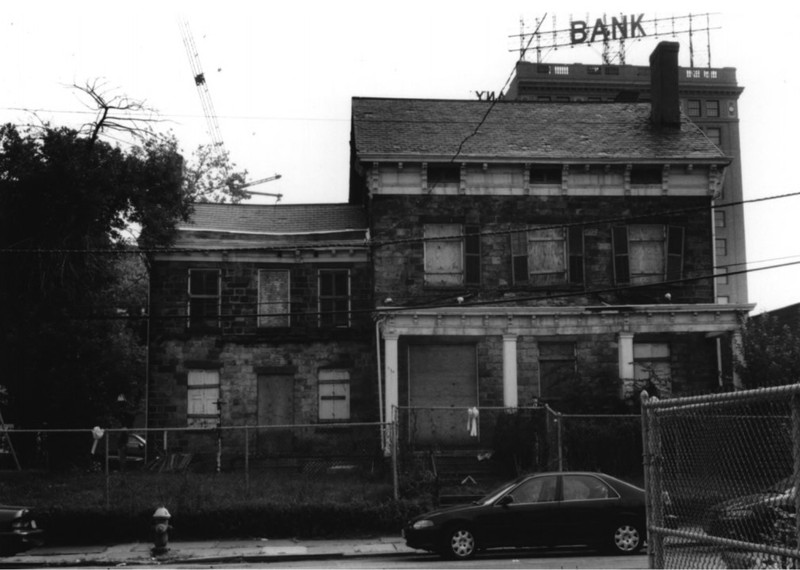
East & N sides of Van Wagenen House in 2004 photo; archaeological survey in rear yard (HMRA)
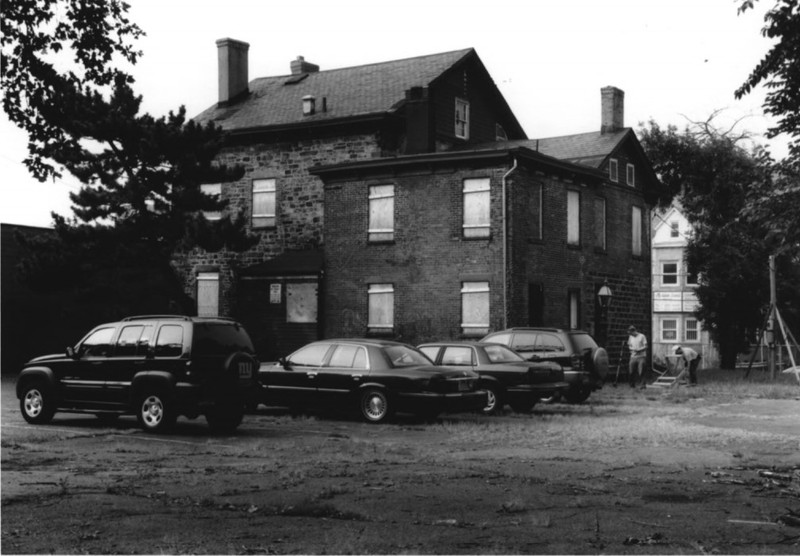
Architectural details of SE corner of house, 1840s stone walls, 1860s cornice (HMRA 2004)
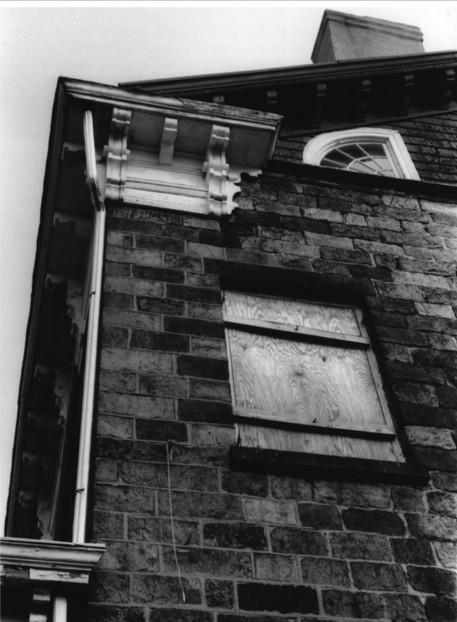
Rear facade of Van Wagenen House in 1967 photo from HABS study (HABS NJ-767, George Eisenman)

Fireplace in front parlor on first floor of home during 1967 photo-documentation by George Eisenman (HABS NJ-767)
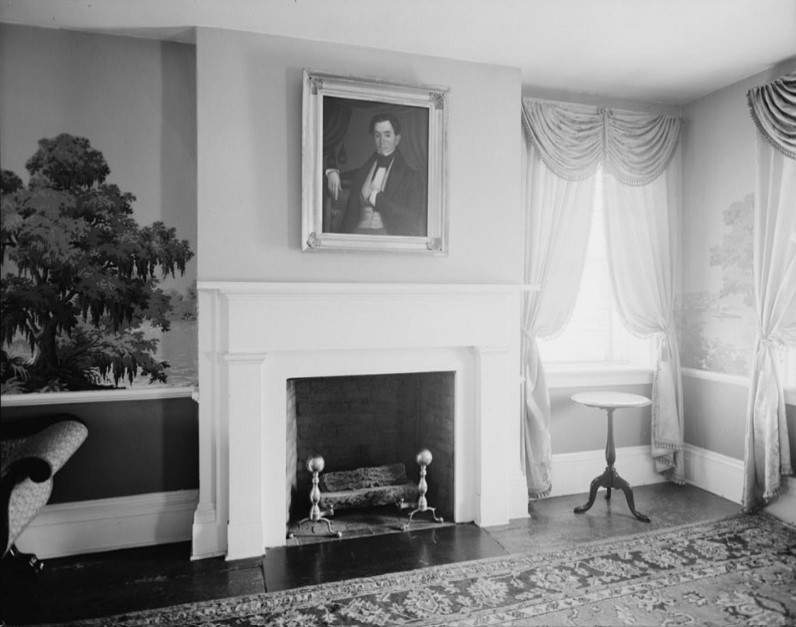
Interior of vacant Van Wagenen House; sitting room in 1860s addition (HMRA 2004)
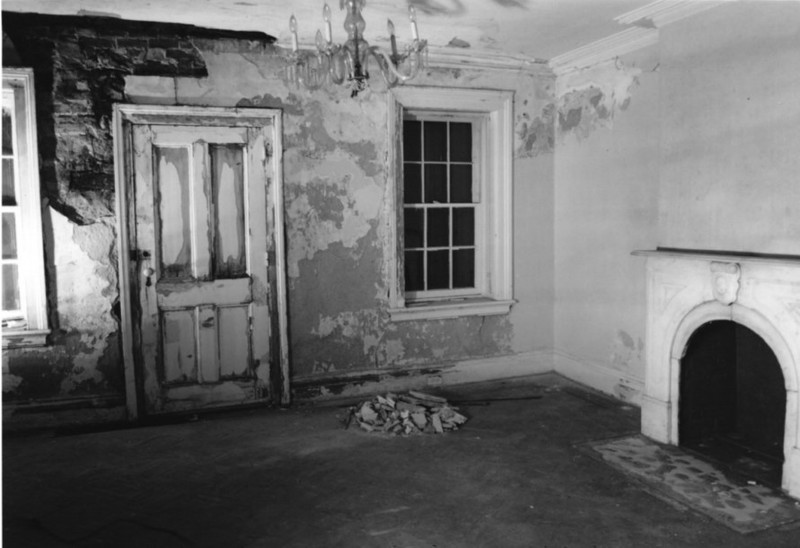
Bergen vicinity on British military map of Sept. 1776 troop positions in NYC area (Anonymous)
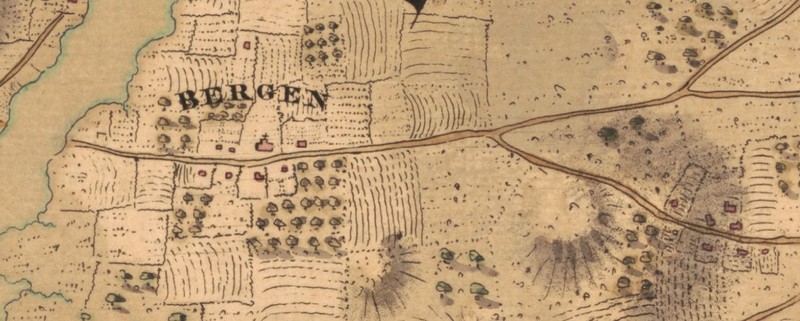
Backstory and Context
Text-to-speech Audio
The original part of the Van Wagenen House was one-story, one-room deep, of ashlar stone; this is in the western part of the house. The eastern section of the home was added at one time, ca. 1842, and is Greek Revival style, two-and-one-half stories; the same local ashlar stone was used in this three-bay addition, two rooms deep. The original portion of the house then became a kitchen wing. An additional room was added to the rear of the original portion of the house around 1860, and a second floor was added at the same time; the main facade facing south (toward the street now) was faced in matching stone, while the rest of the addition is brick; brownstone lintels and sills abut the main facade's windows and both entry doors. Italianate influences are seen in the latter addition's bracketed cornice. An open rear porch from the 1860s construction phase was enclosed in 1896 and modernized in the mid-twentieth century after the house became a funeral home.
An early owner of the land, Lot 113 in the northwest corner of the town of Bergen, was Gerrit Gerrison, an immigrant who left Wagenen, Holland for New Amsterdam in 1660; Gerrit purchased the lot in 1688 but lived elsewhere nearby, in Communipaw. Bergen was platted in 1660 but this lot was still undeveloped in 1688. Clues to the date of the original house are its physical remnants within the 1860s modifications, the fact that it was only one story (two-story homes weren't common locally until after the Revolutionary War), and records placing a Van Wagenen in Bergen between 1710 and 1721. Dendrochronology was attempted, by dating a piece of an original wooden beam, but was not successful. The house was seen on maps as early as 1778, but may have been built by Johannis Van Wagenen I (the son of Gerrit; some of Gerrit's children adopted a new surname, meaning "from Wagenen") for his grandson, Johannis II, upon his 1749 marriage. Johannis II was the property owner from 1759 (from his grandfather's will) to 1797. The home was in an area of Bergen that remained rural until the mid-nineteenth century. The house passed down through the Van Wagenen family: to Jacob, the eldest son of Johannis II sometime after 1797; in 1839 to Hartman, a son of Jacob; and in 1877 to Hartman's son, Henry. After Henry died in 1900, the house went to his daughter, Eliza Jane Cokelet. Eliza lived in the home until her death in 1943. The roughly 250 years of family ownership ended with the sale of the house in 1947 by Eliza's grandson to Lawrence and Mary Quinn.
There are unconfirmed reports that George Washington met the Marquis de Lafayette on the property during the Revolutionary War, under an apple tree. The pair are said to have dined under the tree one day, during a three-day stay in Bergen in 1780.The Van Wagenen House has been nicknamed "The Apple Tree House" due to this legend. When an apple tree in the front yard fell in 1821, wood from the tree was made into an inscribed cane presented to Lafayette during his return tour of the U.S. in 1824.
The Van Wagenen House was used as Quinn's Funeral parlor from the late 1940s into the 1980s. The vacant and deteriorating house was sold by the estate of Mary Quinn in 1995 and was purchased by the City of Jersey City in 1999. When news of the impending demolition of the Van Wagenen House broke, preservation groups gathered 5,000 signatures in two weeks on a petition to halt the destruction.
A writer noted in 2014 that the Revolutionary War was won in less time than it took to renovate the Van Wagenen House, which was still a work in progress fifteen years after the city's 1999 purchase from Provident Savings Bank. Over $4 million had been spent by then to save and renovate the former funeral home. Only landscaping and some exterior touches remained to be done. Since the 2017 reopening, the Van Wagenen/ Apple Tree House has been the site of poetry slam contests, local school history fairs, holiday tours, and special lectures and exhibits (pre-pandemic).
Sources
Emelumba, Chinedun. Revolutionary War won in less time than historic Jersey City Apple tree House renovation, NJ.com. February 14th 2017, updated January 17th 2019. Accessed March 7th 2021. https://www.nj.com/hudson/2014/02/wreath_laying_ceremony_held_at_historic_apple_tree_house_in_honor_of_presidents_day.html.
Hortillosa, Summer Dawn. Revolutionary War Sites in Hudson County: The Apple Tree House in Jersey City, NJ.com. July 2nd 2011, updated March 31st 2019. Accessed March 7th 2021. https://www.nj.com/hudson/2011/07/revolutionary_war_sites_in_hud_2.html.
Jersey City Office of Cultural Affairs. Apple Tree House, About. Accessed March 7th 2021. https://www.jerseycityculture.org/apple-tree-house/.
Newman, Margaret. NRHP nomination of Van Wagenen House, Jersey City. National Register. Washington, DC. National Park Service, 2005.
Preservation New Jersey. Van Wagenen/ Apple Tree House, Listings. January 1st 2021. Accessed March 7th 2021. https://www.preservationnj.org/listings/the-apple-tree-house/.
https://npgallery.nps.gov/AssetDetail/NRIS/05000884
https://npgallery.nps.gov/AssetDetail/NRIS/05000884
https://npgallery.nps.gov/AssetDetail/NRIS/05000884
https://www.loc.gov/item/nj0064/
https://www.loc.gov/item/nj0064/
https://npgallery.nps.gov/AssetDetail/NRIS/05000884
https://www.loc.gov/item/2003630407/
